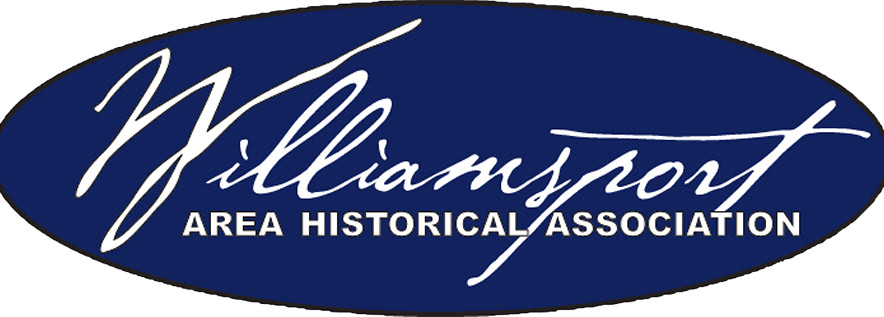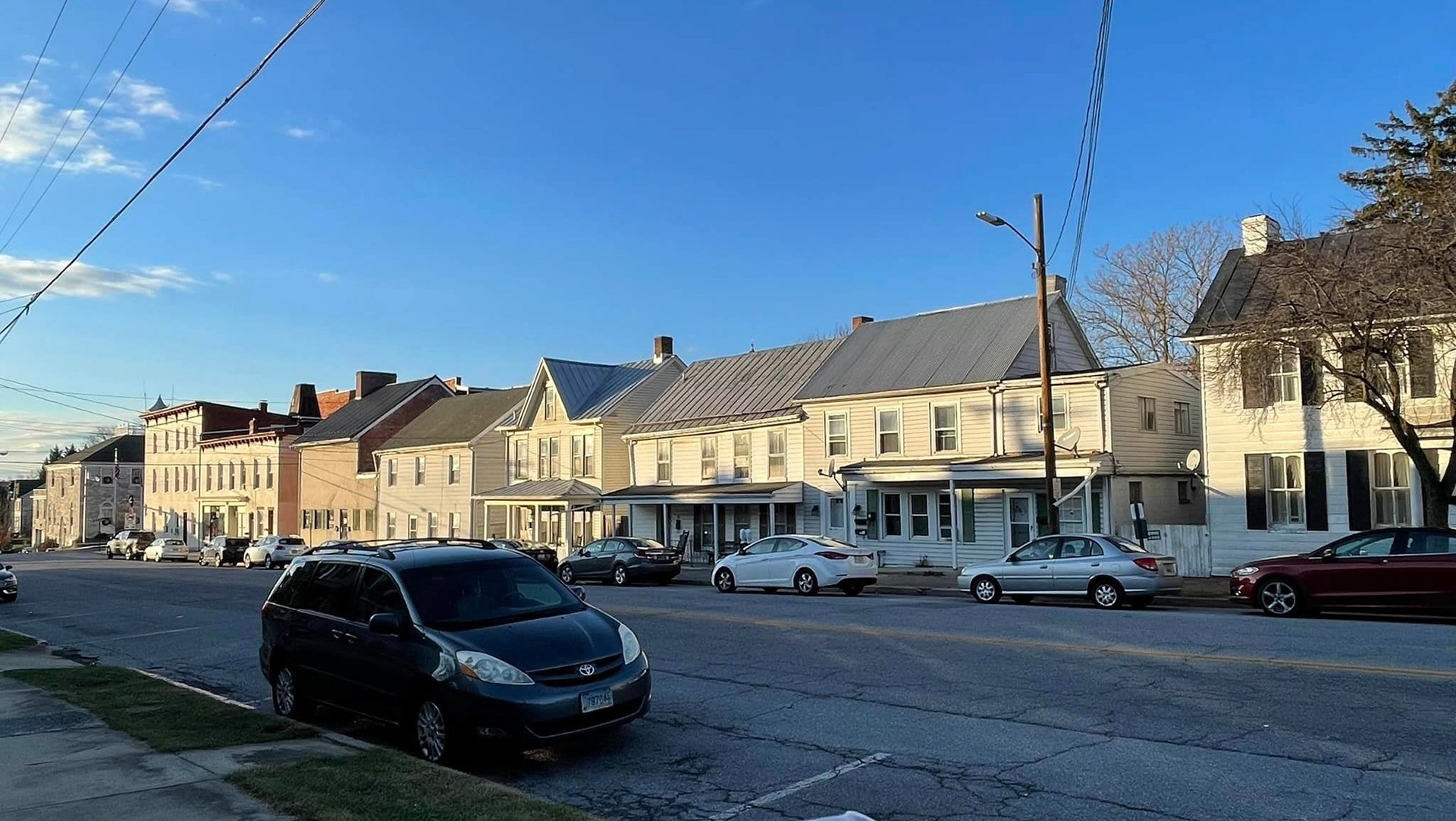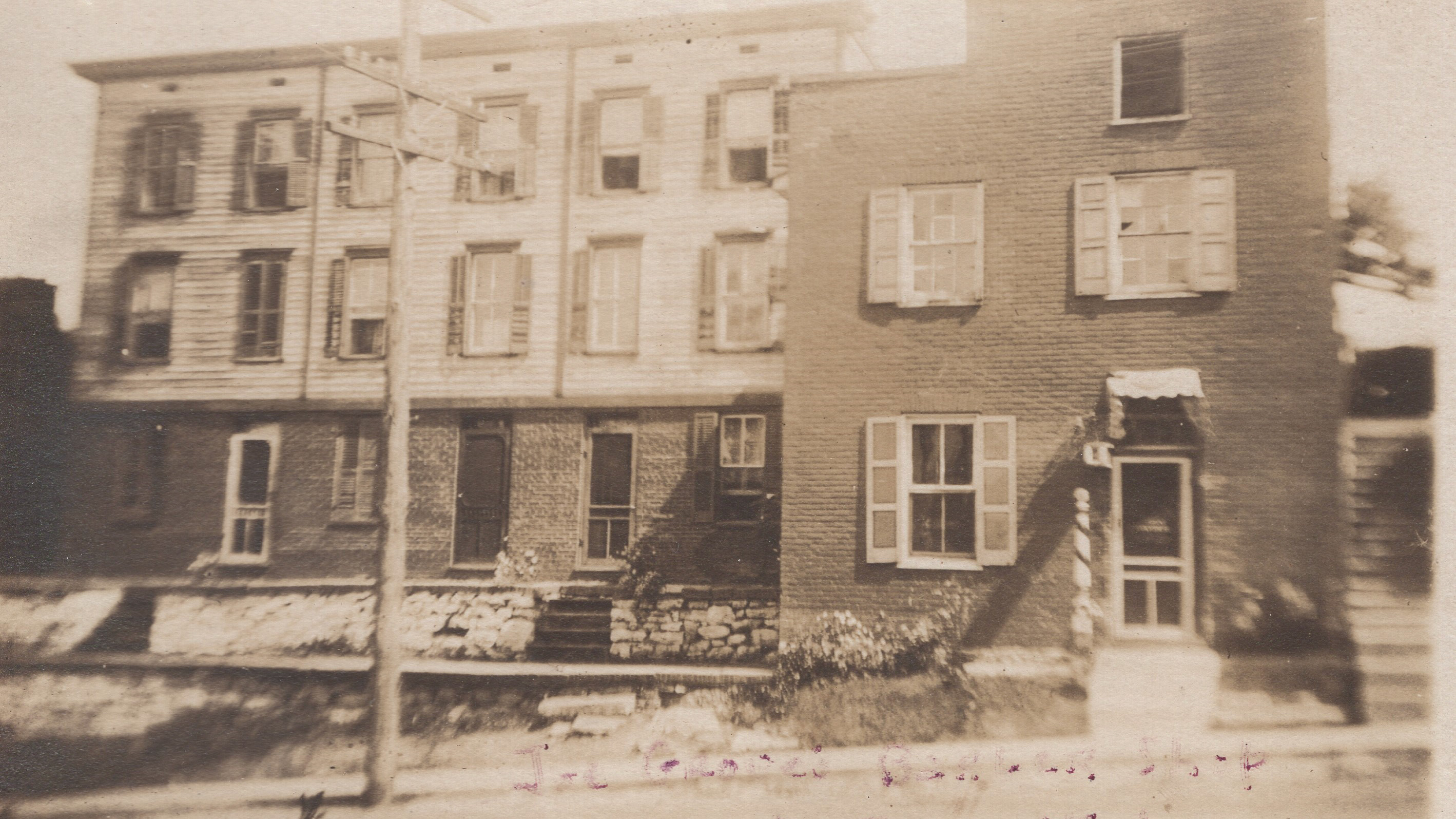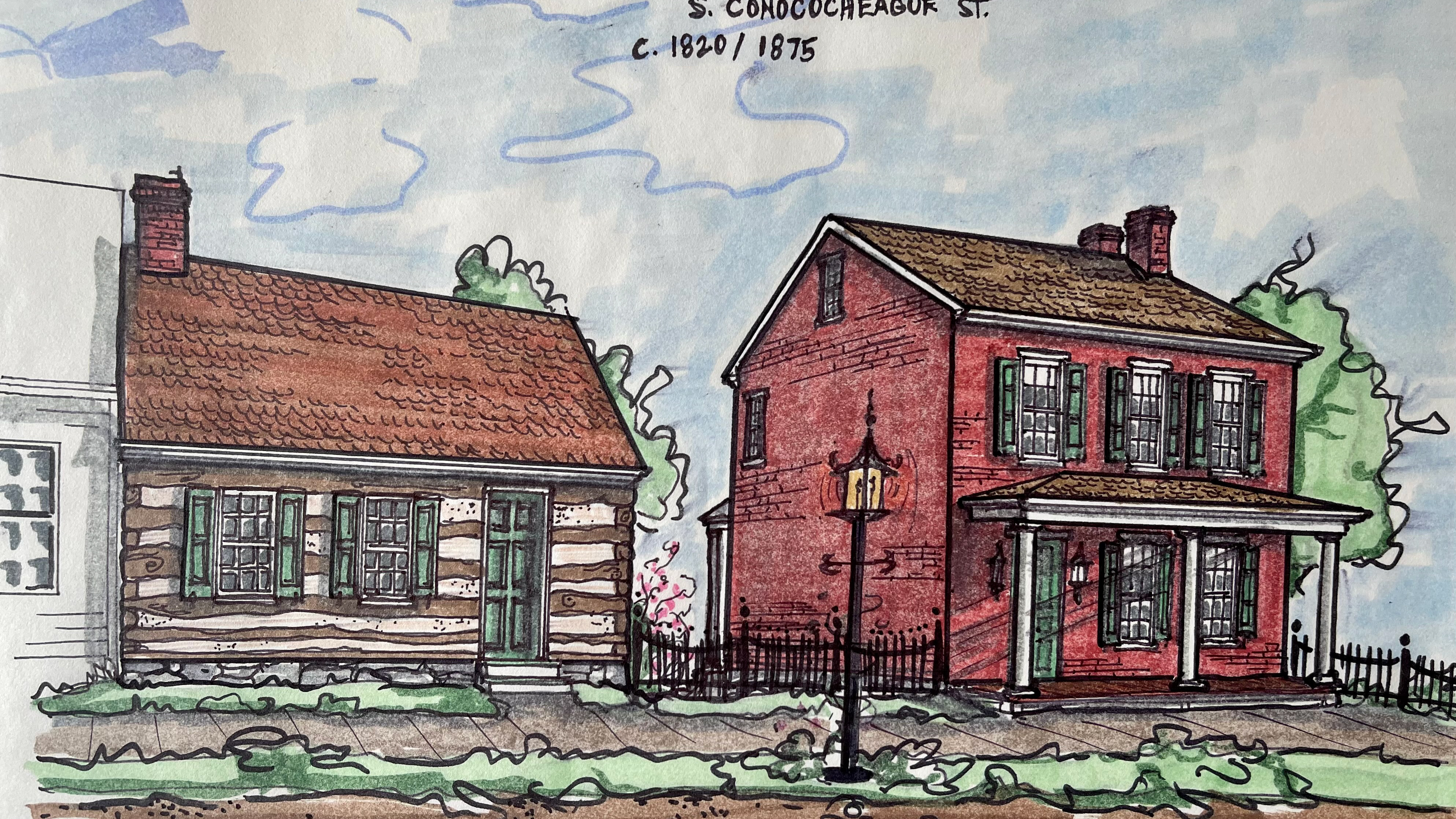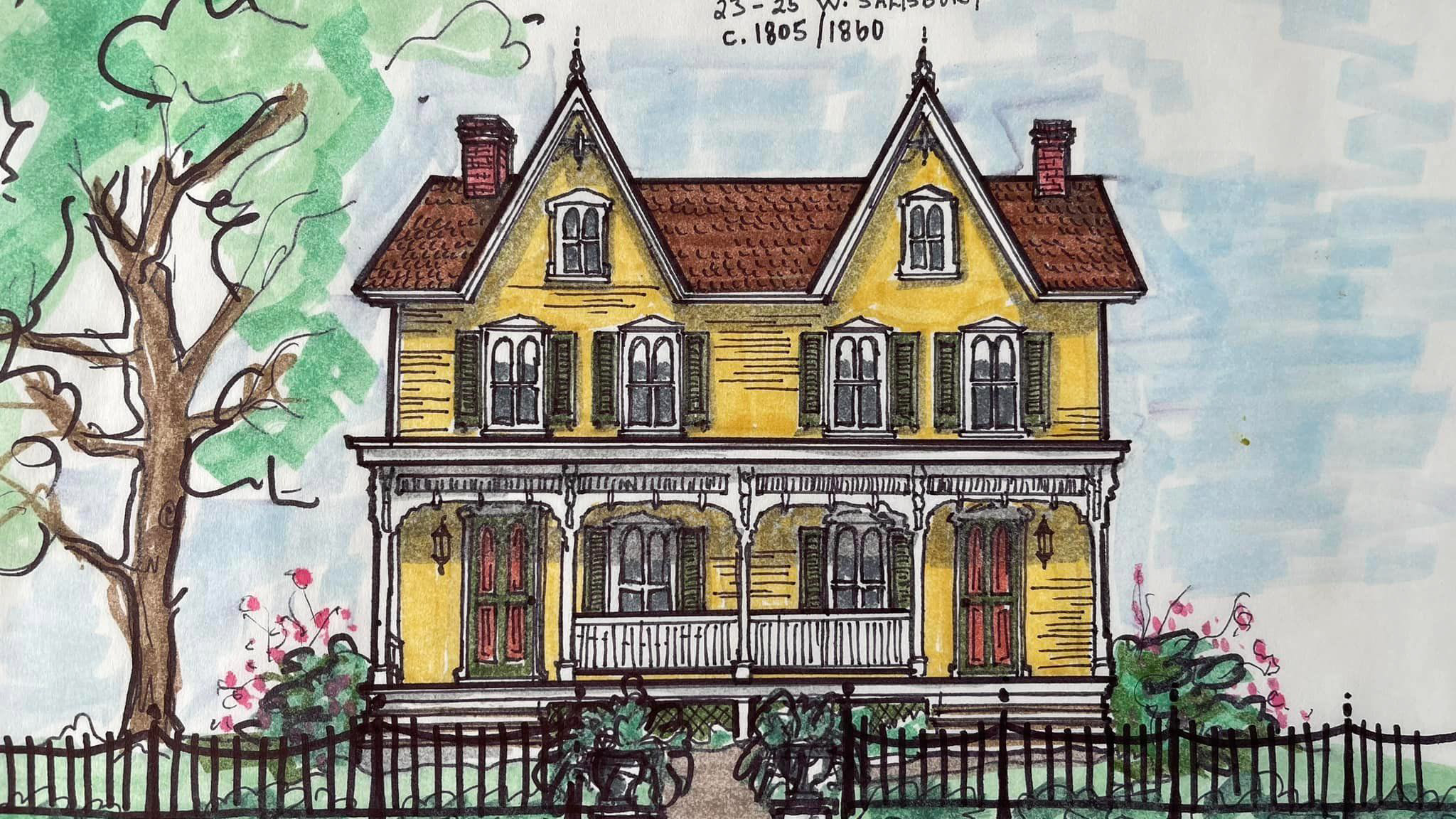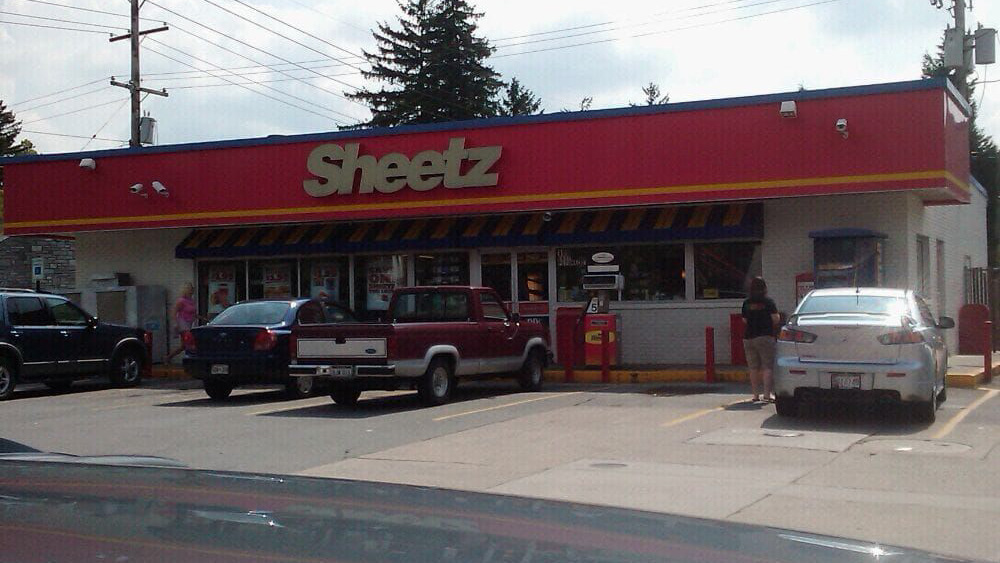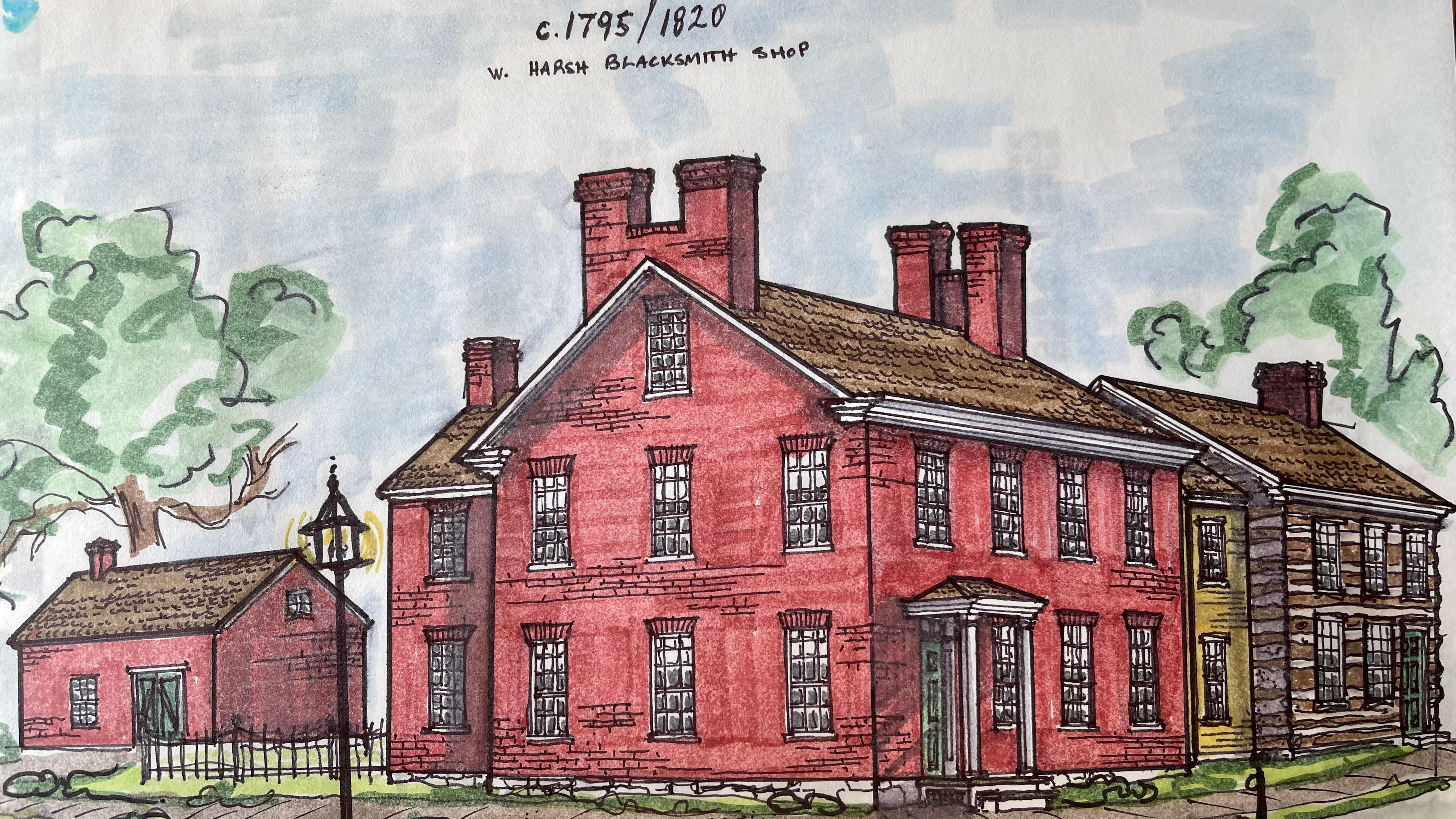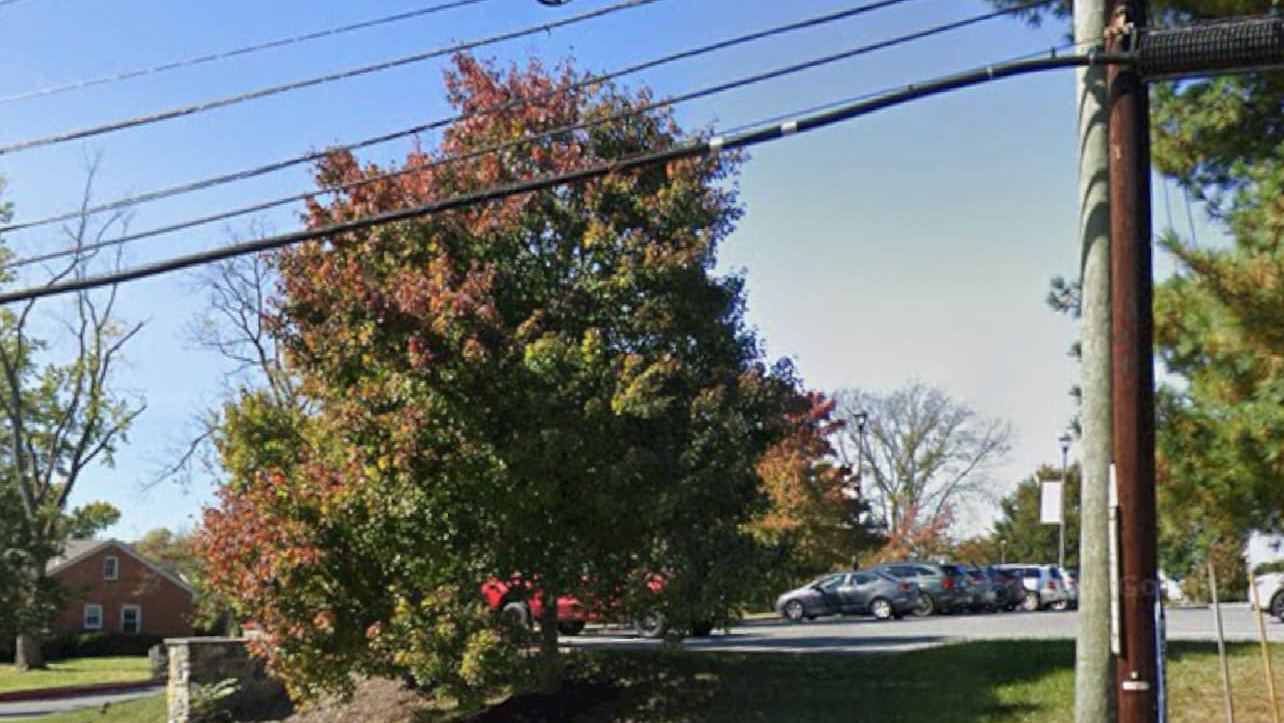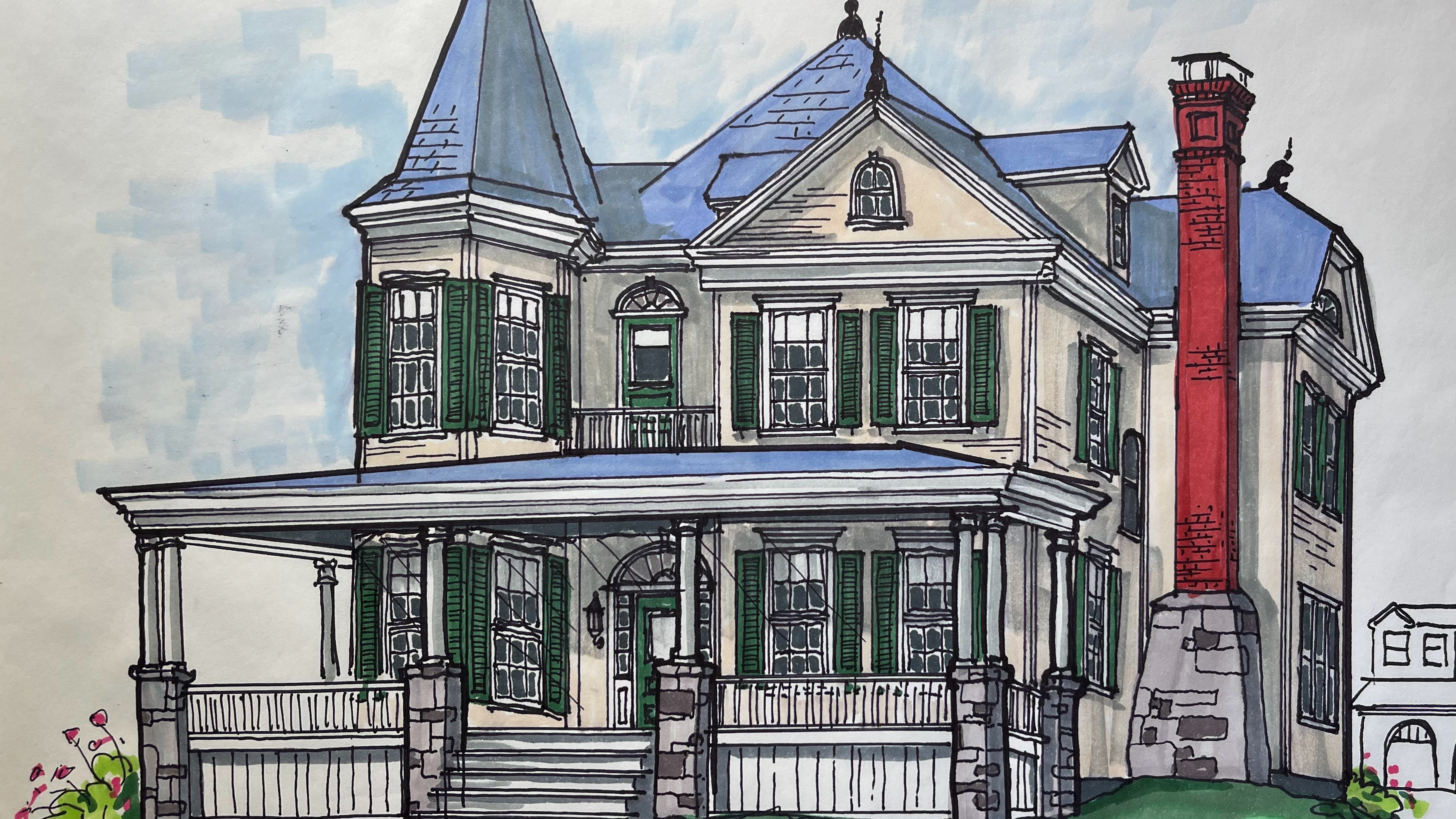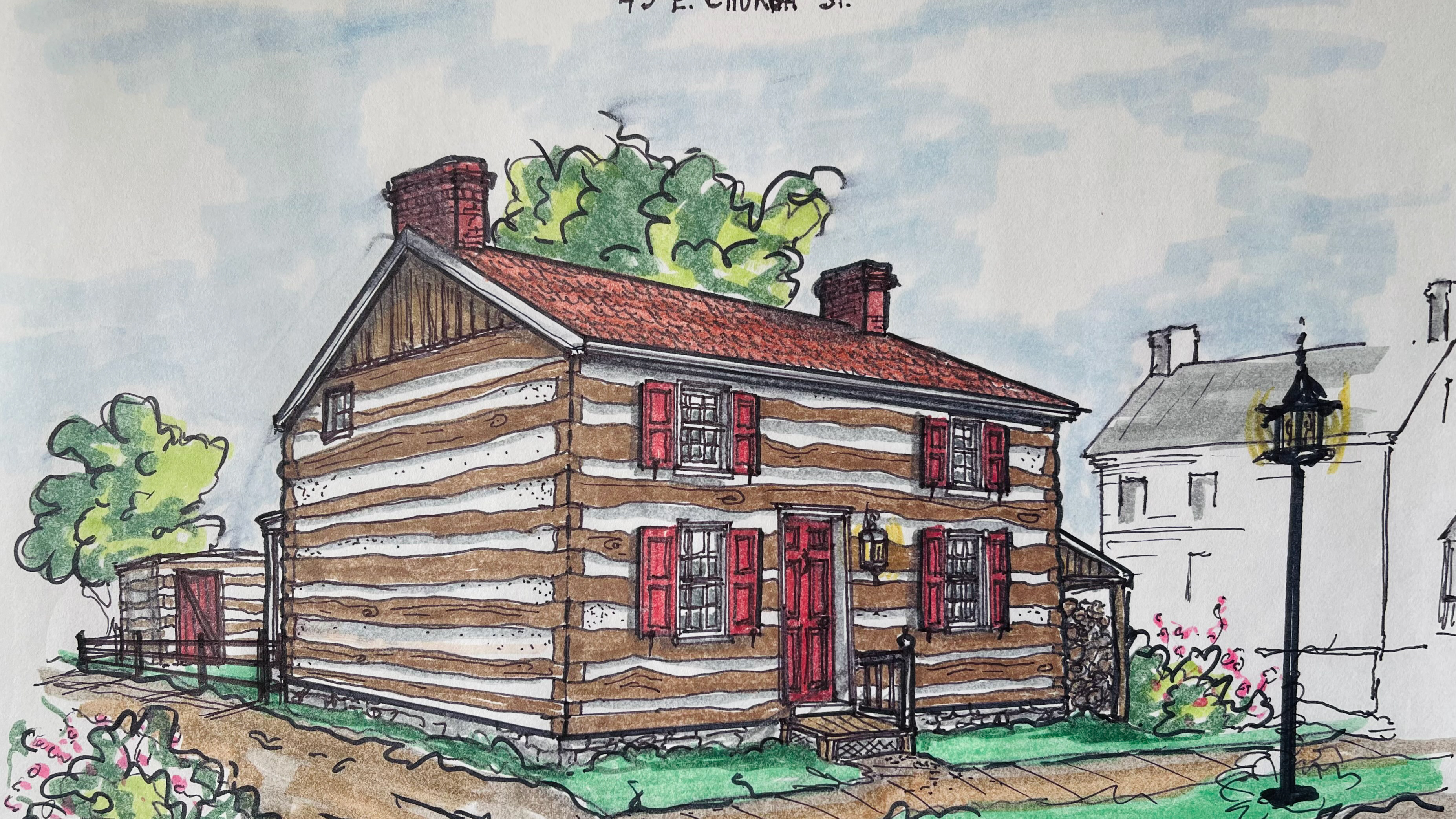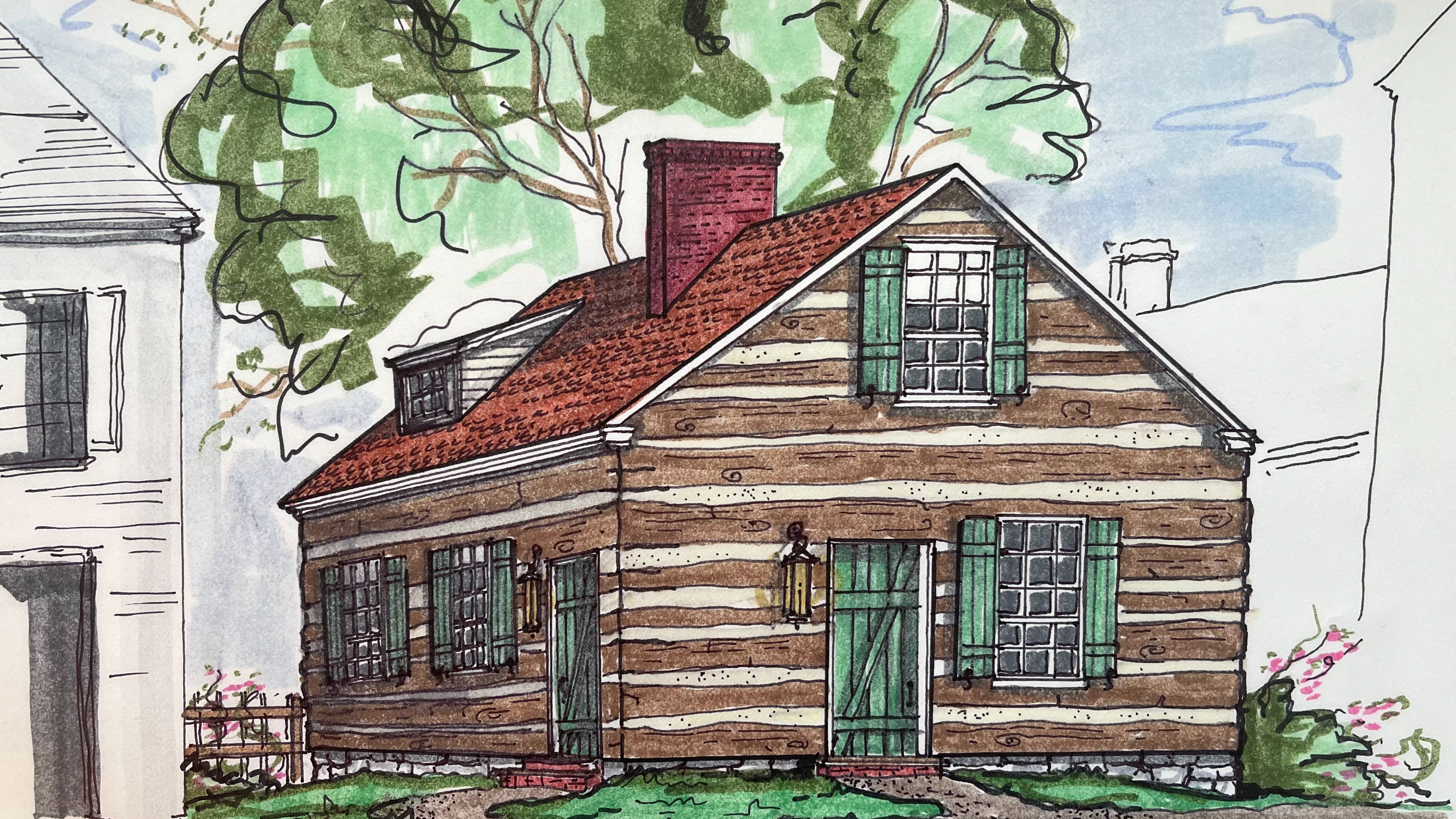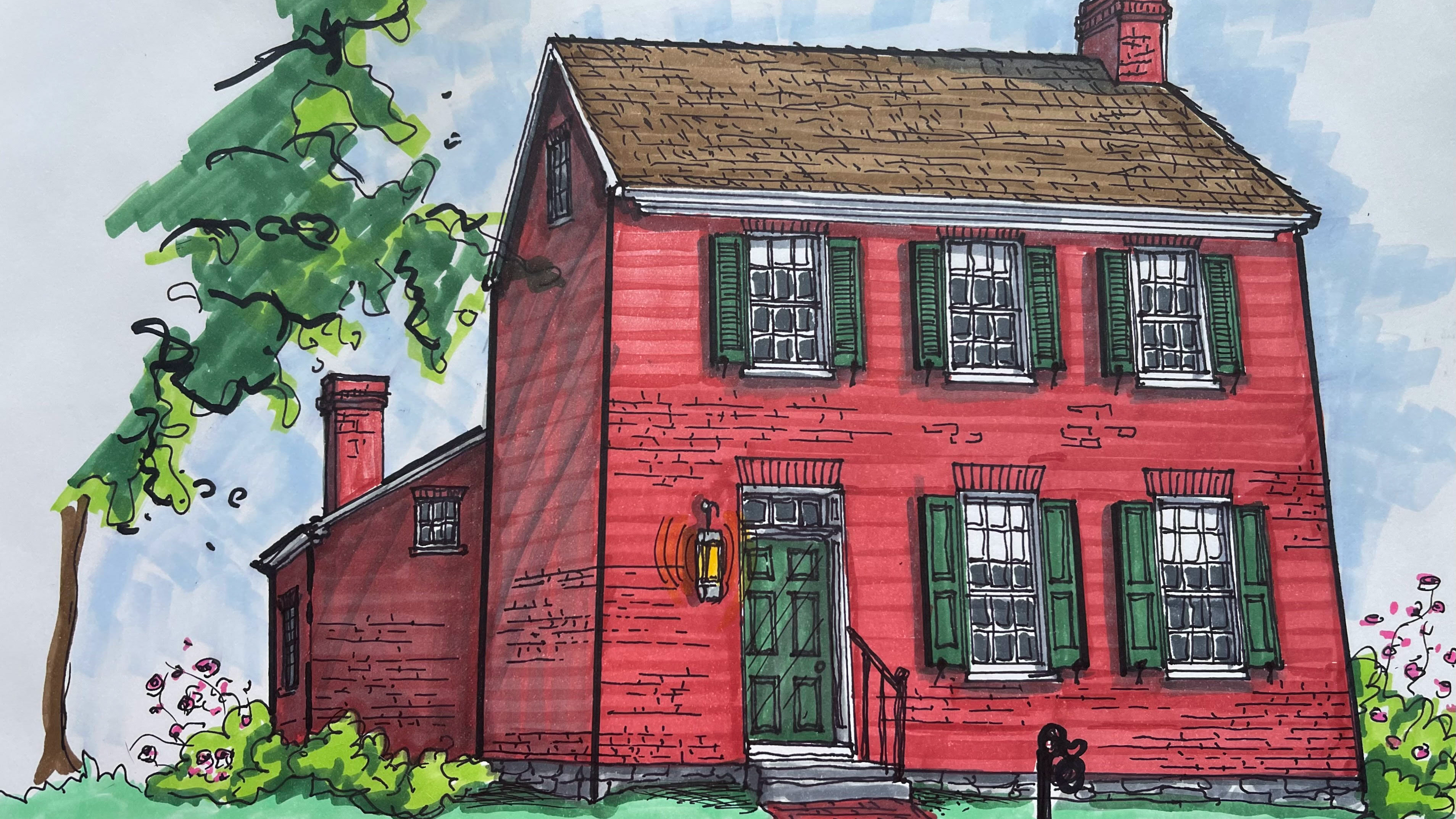The entrance to a parking lot now runs through what was Williamsport’s original Lot 6. Lot 6 or 124-130 West Potomac is situated on the south side of Potomac street just east of the original town square as laid out by Otho Holland Williams in 1787. The town square eventually became Miller Lumber. It’s undeniable that this lot would have been desirable being so close to the square and all it had to offer.
Herman Long leased the lot that same year and set to building his home. He built two structures side by side. One as his home and the other for either a business or a tenant dwelling. Both buildings were built of log and proportioned in the Georgian Style. Having been built in 1787 these houses were among the first to be built in Williamsport, a few years older than even the Hogg House we highlighted a few weeks back. The houses were each built with dual entrances in the façade, popular in German homes. When President Washington visited Williamsport in 1790 he would have passed right by these houses.
In 1795 an article in the newspaper states that George Bishop opened a Tavern in Williamsport “under the sign of General Washington.” That same year an agreement in the Washington County Land records details that Herman Long allows George Bishop to live with his family in the room above the kitchen and be allowed cooking privileges.” The agreement doesn’t state which lot the house is on so it’s unclear if one of these buildings was indeed the early tavern but it certainly a possibility.
Herman Long sold the buildings in 1804 to his son Abraham and a business partner James Denham. James bought Abraham out in 1807 and in 1815 sold to Michael Kreps for $800, a great deal of money. In 1817 Kreps posted in the newspaper that his “apprentice” had escaped from his Hattery, taking with him clothes, which were evidently owned by Kreps. In 1817 this was the only property Kreps owned in town, proving that his residence and hat shop were in these buildings. The “apprentice” and the clothes were never recovered. When Kreps died in 1844 his executors sold to the Wolf family. The property passed hands a few times when it was purchased by the Forsythe family in 1925. The Forsythe’s owned the old houses until the late 1970s when it was sold and ultimately demolished around 1980, just a few years shy of their bicentennial.
If they had been preserved they would have been 235 years old today. These old homes witnessed Williamsport’s growth from day 1. They saw George Washington’s visit, the Civil War, all the World Wars, and even the space race. Potomac Street would be so much more charming if these had been restored and repurposed. Instead holes in our history continue to dot our storied streets. Williamsport’s heritage is important and should be protected.
